A Structure That Blends With the City: Oita Prefectural Art Museum (OPAM)

Designed as a "transparent structure" by acclaimed architect Shigeru Ban, the Oita Prefectural Art Museum (OPAM) is an expansive art center in Oita City. In addition to special exhibitions, the museum has a remarkable collection of premodern, modern, and contemporary Japanese art.
OPAM, the Cultural Heart of Oita City
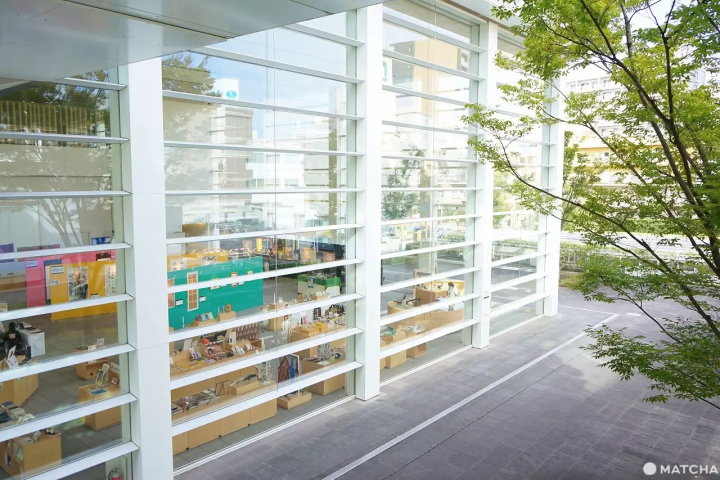
Have you ever felt inspired and full of positive energy after simply spending a few minutes in a building? If yes, then you've also probably felt that some structures seem to be imbued with spirit and act upon visitors through their design.
Oita Prefectural Art Museum (OPAM) is such a structure that carries meaning and leaves you changed after your visit. Opened in May 2015, this art center has become an important hub of cultural creation and interactions in Oita.
Read on to learn more about the features that make this structure a marvel of urban architecture, about its exhibitions, and why you should definitely include it in your itinerary when traveling to Kyushu.
A Transparent Structure: OPAM's Architectural Features
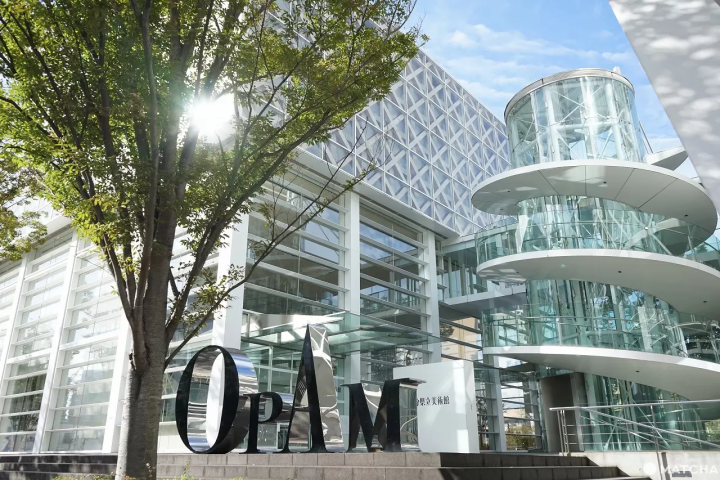
Oita Prefectural Art Museum (OPAM) has been designed by Shigeru Ban Architects. Shigeru Ban, who was awarded the Pritzker Architecture Prize in 2014, is known for his innovative use of paper tubes as building materials. Paper tubing is low-cost, recyclable, and produces little waste. It has proven to be very efficient in building emergency shelters for disaster refugees.
The concept of transparent and open architecture that plays a central role in Shigeru Ban's work can be easily noticed in OPAM's structure. The atrium on the first floor is two-story high and enclosed in glass, making the interior and exhibitions inside visible from the street.
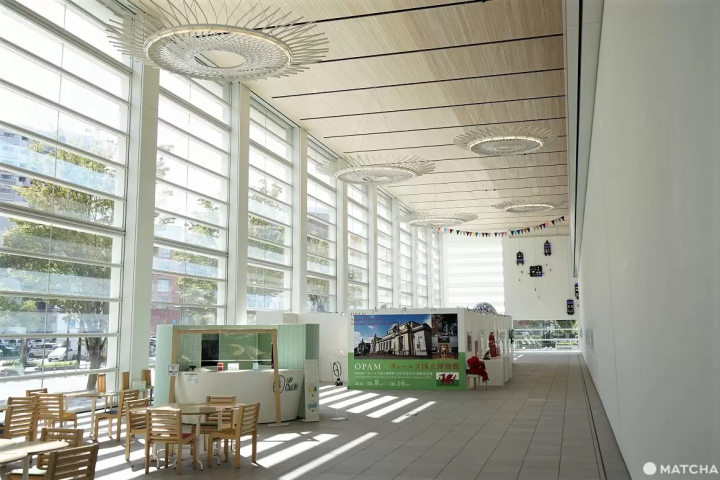
The southern facade of the atrium consists of retractable glass doors; these can be fully opened to make the interior a semi-public space where anyone can enter freely.
The museum shop, a cafe space, and exhibition areas that can be easily compartmented through movable walls are also located on the first floor.
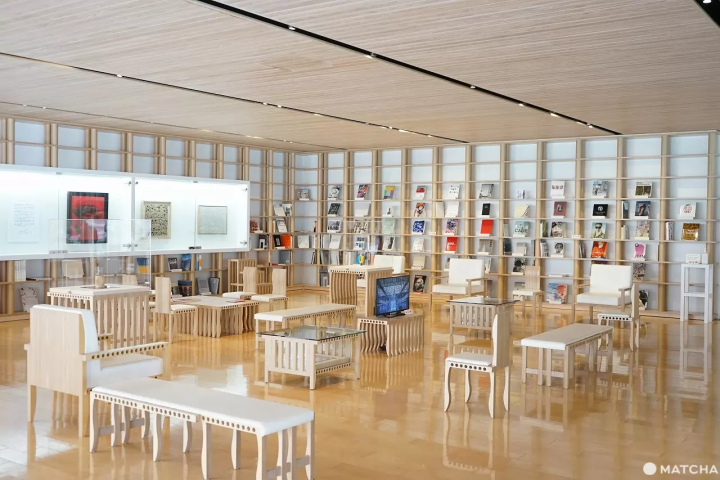
On the second floor, there is an art library that can be used by visitors for free. A relaxing and inspiring space, this library is known as the Reference Area.
The cafe on the second floor features an interior design created with paper and cardboard tubes, the trademark of Shigeru Ban's architecture. The elegant simplicity of this space evokes the image of traditional Japanese rooms.

The foyer that leads to the main exhibition area showcases local crafts from Oita Prefecture. The woodwork used for the ceiling uses cedar grown in the mountains of Hita.
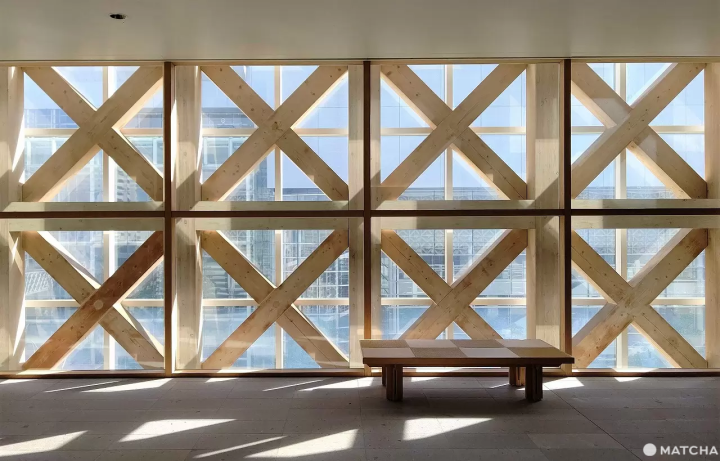
The latticework of the windows, the tatami benches, and even the flooring tiles are all beautiful examples of local Oita crafts.
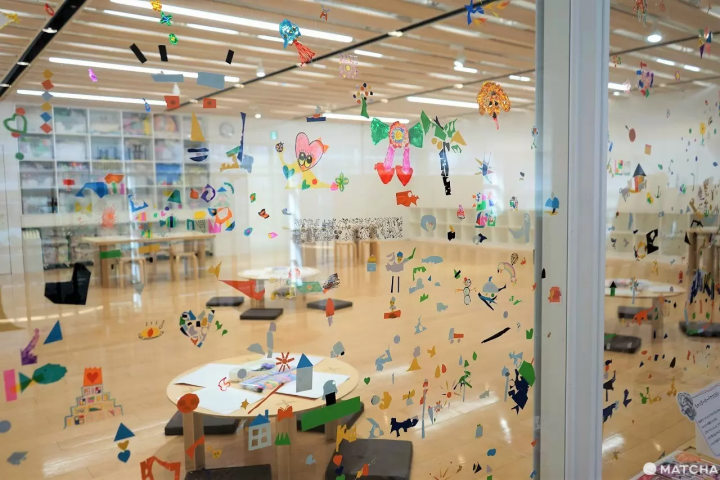
OPAM holds various cultural events and workshops open to the public. The studio and workshop area used as venues are also located on the second floor. As a visitor, you can peek inside and feel the excitement that these open spaces inspire.
Art Displays and Exhibitions
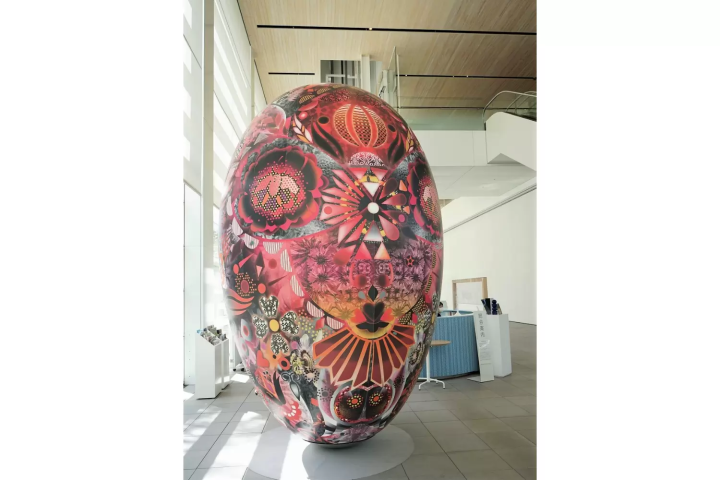
There are several works of art on permanent display in the atrium and foyer, which can be accessed for free. The visitors are greeted by one of the "Eurasian Garden Spirits" by Dutch designer Marcel Wanders; these immense objects designed with images that evoke cosmic mandalas can be found in various corners of the atrium.
The first Dutch ship that ever reached Japan landed on the shores of Usuki in Oita in 1600, marking the beginning of a long history of cultural and economic exchanges between Japan and the Netherlands. Due to this background, having works by a Dutch artist on display in the public atrium of Oita's main art center is of particular significance.
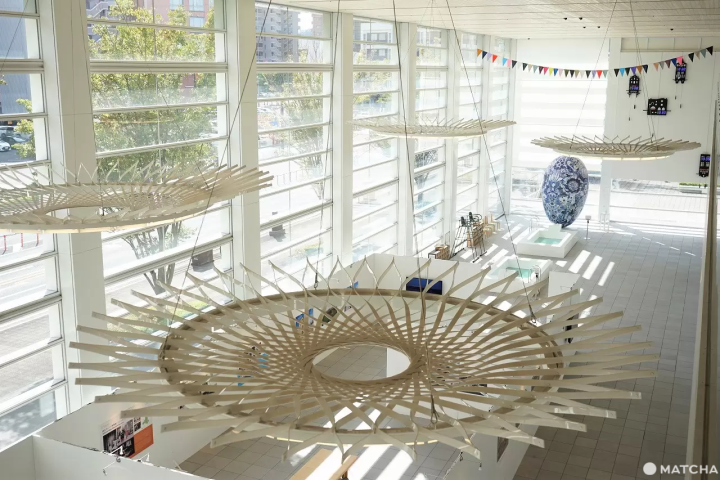
Evoking the image of white lotus flowers, the "Eurasian Garden Watershed Weeds" by Reiko Sudo can be seen from both the first and the second floors.

AMANIWA, or "the sky garden," is a display located in the foyer on the second floor. This flower garden installation that opens itself to the sky consists of works by three contemporary craft artists: Kyoko Tokumaru (ceramics), Mariko Isozaki (ceramics), and Yoshihiko Takahashi (glass).
There are several other art pieces on display in the area that can be accessed for free. Do take the time to walk around the precincts and see them up close.
OPAM hosts exhibitions of art pieces from the museum's collection, as well as special exhibitions and community art exhibitions. The museum collection consists of around 5,000 art pieces of premodern, modern, and contemporary Japanese art, as well as sophisticated Oita crafts.
The museum takes pride in its collection of works by Japanese artists hailing from Oita such as Tanomura Chikuden (1777-1835), whose work was foundational for the Bungo-Nanga school of painting, Fukuda Heihachiro (1892-1974) and Takayama Tatsuo (1912-2007), who led traditional Japanese painting into modernity, or the famous modern sculptor Asakura Fumio (1983-1964) who is often referred to as "the Rodin of Japan."
Usually, there is at least one special exhibition coinciding with an exhibition of works from the museum collection. Do take the next opportunity to enjoy art at OPAM for deeper insights into Japanese culture.
Featuring Exclusive Souvenirs! The Museum Shop
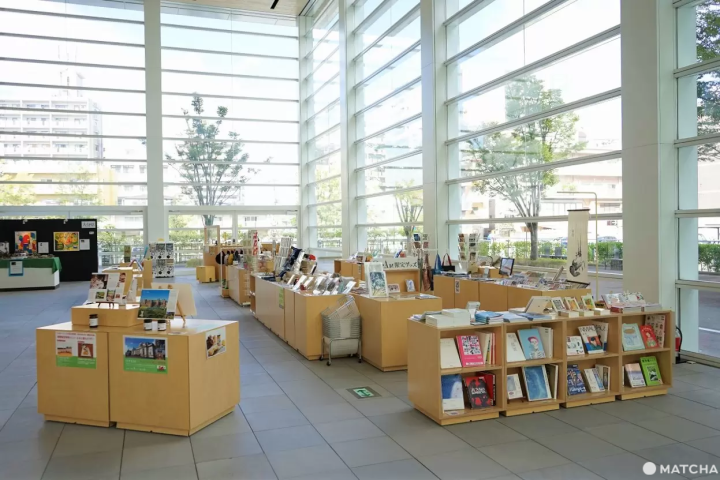
The museum shop on the first floor offers a wide range of art-inspired items that are ideal as gifts.
Some of the products on display are exclusive to this museum; they have been created either in collaboration with local artists or to mark special exhibitions.
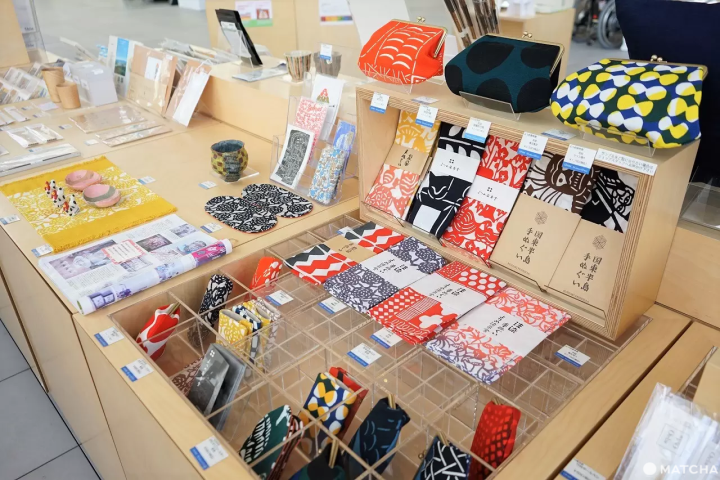
All the items are beautifully crafted and of excellent quality. They are ideal mementos from your trip to Oita.
When in Oita, Enjoy Art at OPAM

The Oita Prefectural Art Museum is a center where visitors can enjoy local culture and art. Whether you're an avid art lover or not, this facility is inspiring in itself. It embodies the spirit, the open heart, and the ideals of the local community, which boasts an outstanding history of creativity and intercultural exchanges.
Hotels near Oita Prefectural Art Museum OPAM
Read also
In cooperation with Oita Prefectural Art Museum and Beppu Project
Ramona, English content editor at MATCHA since 2016, has been practicing ikebana flower arrangement (Ikenobo School) and tea ceremony (Omote Senke) since 2012. She arrived in Japan in 2012 as a graduate student with a focus on Japanese literature and performing arts. As a travel editor and writer, Ramona has visited and documented 40 of Japan's prefectures with a focus on art, history, traditional Japanese crafts, and performing arts.







































![[Northern Okinawa] 4 Recommended Cosmos Fields in Okinawa | Sunflowers and Cherry Blossoms in the Same Season!](https://resources.matcha-jp.com/resize/720x2000/2024/08/12-192028.webp)



![[Corporate Visit List] Near Kansai Airport! Discover Japan’s Technology and Business Philosophy through Industrial Tourism](https://resources.matcha-jp.com/resize/720x2000/2024/12/13-215168.webp)